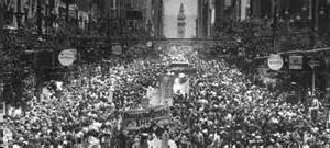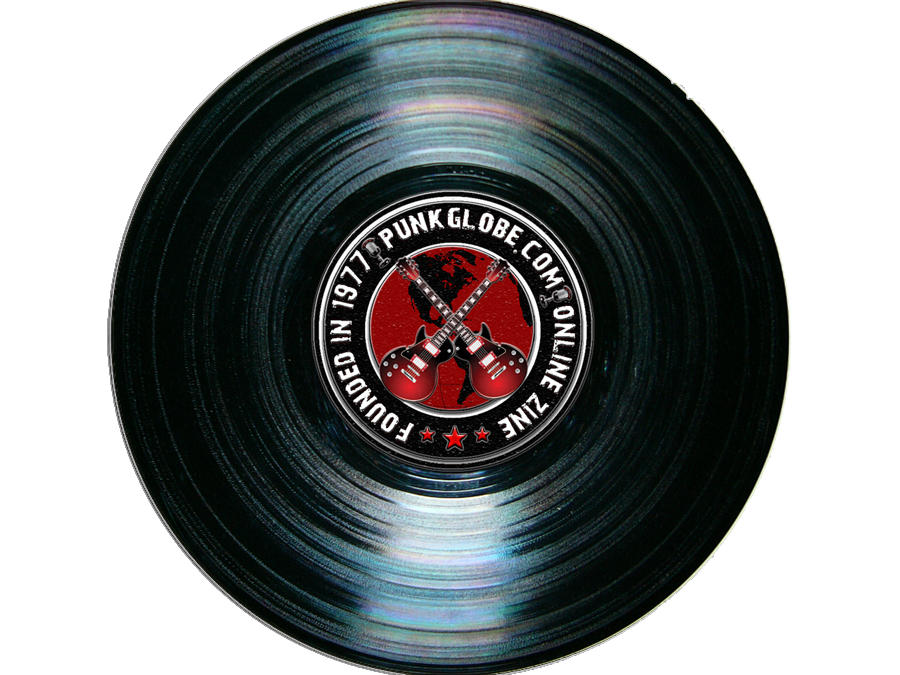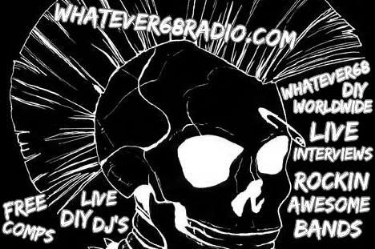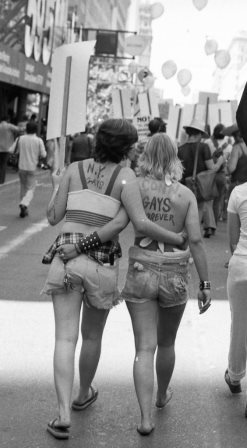
By the time this gets to print it will be around two weeks since the terrible tragedies and carnage of Orlando. On one hand it would seem so inappropriate to write about my wide-eyed adventures in San Francisco in 1978 in light of such heartbreak. Yet, perhaps not, because of where I am in my tale which is in the June of 1978. Though there had been Gay events and such on Polk Street since 1971, it was in 1978 that the parade broke out and spread its wings with the theme “Come Out with Joy, Speak Out for Justice” and its now worldwide famous rainbow flag first appeared. As for me, I was a bit nervous the day before that happened. Then, the city seemed filled to the gills with people and there was so much excitement in the air. Myself, I was not sure what to think. My experience with gay people was then very limited and I had no idea of the new world and life that awaited me in Project One. My understanding of who Gay people were stemmed from what I was told as a child by my mother, that is, that people who were either double sexed in body or in spirit were rare. In her time Gay people were called 50/50 and they faced much unhappiness because they were not seen as normal--this especially so in Germany during the Second World War, the years of my mother’s childhood and youth. When I became a little older she told me a story about a time when she was a ballerina late in the war and during the great starvation. She was still quite young, perhaps 17 or 18. The ballet troupe she was with was desperate to find stages to dance on because so much had been bombed out everywhere. At one point they even joined with the circus to be able to perform but still longed for a stage. One day they were brought some exciting news but it meant agreeing to a “deal,” one that the owner of the ballet would not implement unless everyone, including the dancers, agreed to it. So, they were all taken to this town that had been bombed quite considerably. From the outside, the building looked like all the other damaged buildings, but inside was a beautiful theater that looked like opening night in its state of readiness. Mother and all of the ballerinas were open-mouthed and could not believe their eyes. Then quite slowly and from out of the shadows came gaunt, ragged and starved looking men and women of various ages. Some were wearing pink stars, and there were a few dwarfs and a few what would be known as unusual people or freaks. They had been hiding in the theater for years. During the war a high level Nazi loved the theater especially this one.

He was a closet homosexual and wanted his beloved theater to be taken care of. So he made sure from the outside it looked damaged like the buildings around it and instead of sending all these people off to be gassed in the camps he hid them on the condition that they had to maintain the theater and entertain him and his people when he demanded it. The bad thing was the caretakers could not hardly ever leave. At first the Nazi and a few friends made sure they were given food and a few supplies of various kinds, especially for the upkeep of the theater, but the war had worn on, killing people and transferring them. Now there was no one and they were starving. So the deal was that the ballet could dance there if they would bring in food and some supplies, then help bring in others after they moved on so the occupants would not be left to starve again. A deal was struck and my mother said that it moved her heart to see how people brought anything they could hardly spare, a few coins, a piece of jewelry or chicken eggs--anything to be able to see a show. I asked my mother why did the Nazis want 50/50 or unusual people dead? She replied that it was thought by Hitler and the Nazis that such people were not perfect examples of humanity, and they did not want them to live and breed. The Nazis thought they were damaged in mind, which made them do ungodly things such as men wanting to marry men. I was confused but men marrying men cannot make babies I stated and why did they just not pretend to be normal I asked. My mother smiled “That in many cases is easier said than done.” I thought things over and then asked “Do you think that these people could be different and become like us?” My mother thought it over for a good long minute before answering. “Maybe in rare cases but I think that most of the time this is how these people are born. There are even people who are born with the organs of both a boy and girl. I saw this as a nurse in Texas. They did not know what to do because this child had both perfect male and female parts. I took a deep breath and asked Mother “Do you think the Nazis were right in wanting these people dead?” She responded, “No, of course not, and I do not believe that the good Jesus would have wanted this any more then he wanted the Jews and all the other people killed, even our own German people sometimes. The Nazis were mad with power and evil. I think that homosexual people are born this way for some reason we do not understand yet and it is sad that they must suffer in this world.”
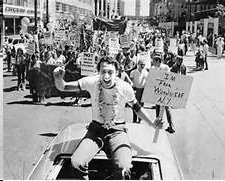
This was the only time that I can recall my mother speaking to me about this. As I grew up in my picturesque little town my somewhat strict parents allowed me to do theater and sing in the choir. I was not allowed to go to sporting events very often or to date boys. So “queer” to me meant strange or unusual and “faggot” a flame or cigarette. So when I heard a boy being called a flaming faggot, I thought it was because they found that boy flamboyant or unmanly. Even by the time I was in college and a very handsome young boy dragged me through some bushes underneath an open window and in a loud stage whisper said “I want to kiss you right here under the window of this queer.” I was totally taken aback. “You drag me through these rough prickly juniper bushes under someone’s window and announce you’re going to kiss me is not my idea of romantic! The overgrown boy blinked his impossible blue eyes at me and sputtered, “But . . . , but he’s queer.” “The only thing queer about this is US underneath this window!” I hissed. We then heard a burst of laughter from the room and thankfully we left, for I was quite embarrassed.
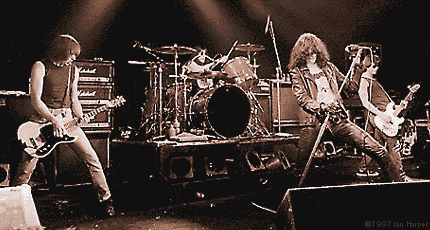
By the time I was in San Francisco and being told that gay people had their own parade I was a bit more sexually aware, but that is another story. I just was not sure what to expect. Everyone was talking about a man called Harvey Milk. Even straight people spoke with pride about his election as an openly gay man. What I stepped into that day was an explosion of joyful noise marching down the streets of San Francisco. The people looked like they all had been dipped into children’s paint sets and this mass of color in various stages of dress and undress moved down Market Street. What blew my mind was that it was not just a few hundred people, but thousands. There were so many gay women too, like the Dykes on Bikes, who revved and roared down SF’s main street and it certainly did not seem any more that these gays were a rare people living like little hidden mice in the corners of our society. Parents were stepping out and down the street hand in hand with their sons and daughters and to my astonishment young people were waving signs celebrating their gay parents. The good hearted laughter and smiles were everywhere. This was not a celebration of lewdness but of acceptance of self and the right to not be prosecuted for who you desire or love. This was where I was. This is where I started to truly grow up in San Francisco 1978. Now, I would hope that in 38 years we all have grown and will not let the darkness that had murdered so many fester into a wound that weakens us to be overwhelmed by the hatred and ignorance of others. The strength of our nation lies in the love for all our people.
